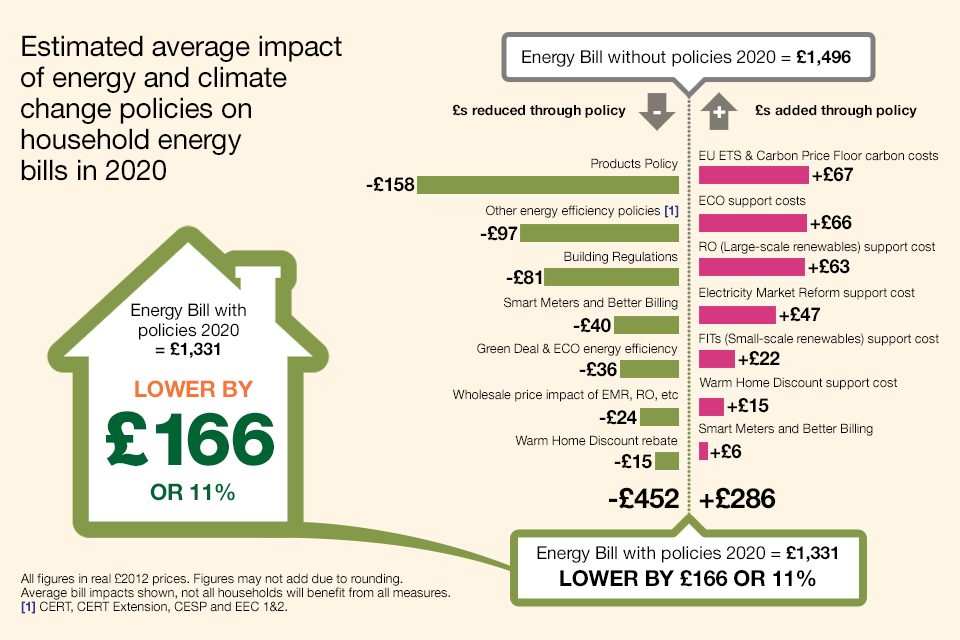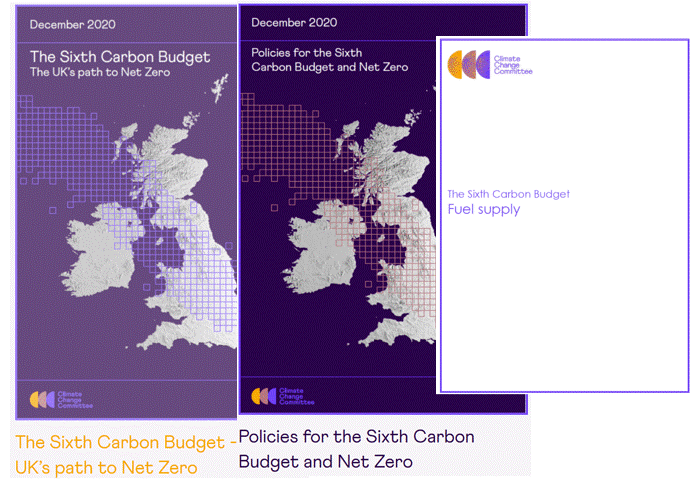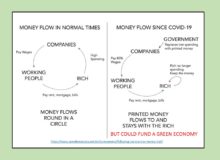It’s a scary thought that humans could damage our one planet so badly that it could stop being a wonderful home for billions of us. Few people have the time or knowledge to know what to believe, so it can seem plausible that Climate Change Deniers are right and Climate Change Scientists are wrong. Otherwise Governments and the Media would be warning people and boasting about their heroic actions – wouldn’t they?.
Some of the main points circulated by these Deniers are covered below – with links to sound information to help people counter the myths.
Conversely it is vital to be careful not to make statements beyond the consensus science, such as billions of people will be dead as a result of climate change within the next generation or two
In Denial and Alarmism in the Near-Term Extinction and Collapse Debate Alastair McIntosh says that “if a case can’t be made without it being over-egged, either the case is not valid or those to whom it is being pitched are being spun. Exaggeration or invoking fear and panic only entrenches positions and sets up a backlash. The unembellished science is quite bad enough to be good enough.“
As at Aug 2020 we have unprecedented heatwaves, hurricanes and the Greenland ice sheet melt – to name a few of the inevitable consequences of the warming world. There is no need to risk a discrediting media by going any further.
“The ancient Celts were justified in their greatest fear that the sky would fall in. The asteroid may be on its way right now. But real science balances up the probabilities.”
Some other sources of sound information addressing common myths and misunderstanding are at:
- GRIST How to talk to a Climate Sceptic
- Skeptical Science ‘Most Used Climate Change Myths’
- UK Committee on Climate Change FAQs.
- Campaign Against Climate Change Misinformation pages
- Campaign Against Climate Change Hall of Shame
- Desmog “Clearing the PR pollution that clouds Climate Science“
- Nineteenth century Scientists 1856 issue of Scientific American on basic warming science
- Refutations to the Great Global Warming Swindle TV programme of 2007
- Dr William Lees William’s refutation of various climate denier points 2014 to an acquaintance
- 10:10’s Seven Things People Say about Wind Turbines as part of their Blown Away campaign to object to fossil fuels being given subsidies whilst onshore wind encounters government opposition.
Deniers and Tactics
- Merchants of Doubt reveals the connection between Deniers of a series of public health causes.
- The Global Warming Policy Foundation regularly promotes misleading information – perhaps to support Global Warming? Carbon Brief received a response from CCC about the Dec 2016 report from GWPF on the cost to UK people of meeting the Climate Change Act.
- Climate Unspun’s expose of the Climate Change Denier’s meeting during COP21 and the messages that they want publicised. Watch out for these appearing in the media!
- Rice University USA, according to Desmog has a Director and other personnel with deep ties to and incomes from fossil fuel industries, speculating that this could account for a series of fossil fuel friendly reports.
- The Heartland Institute questions the reality and import of climate change according to Source Watch.
- The Washington Post reports on relationship between Deniers and their political affiliations, worldviews and values
Myth: The climate is not warming
(UK) Committee on Climate Change
“FAQ 1) The climate has changed in the past. Isn’t this just another natural cycle? There are natural cycles, but what we are seeing now is very different. The main cycle of global change over the last million years has been in and out of ‘ice ages’, in which Earth’s average surface temperature changed by about 4-7°C. For the last 10,000 years we have been in a warm phase between ice ages, meaning we would expect gradual cooling rather than the rapid further warming seen since 1950. The pattern of warming also matches what we expect from our emissions, and does not match that from other natural influences alone such as the Sun.
Scientists predict the Earth will warm 1.7-5.4°C by the end of this century without concerted efforts to reduce greenhouse gas emissions. This pace of global change is far faster than any of the ice age cycles.”
——————————————————————————————————————————-
Skeptical Science
contains a graph, based on Goddard Institute for Space Studies data, tracking global temperatures from 1880.
It also has a moving graphic showing how Contrarians see global warming since 1970 compared with the way Realists interpret the data.
xktd has a long timeline showing the ‘natural’ variations over the years and the sudden warming up over the last few years.
——————————————————————————————————————————-
The BBC also has moving graphics showing that the world is warming.
The US Government National Centers for Environmental Information
contain comprehensive graphs and records about global and US historic weather trends. For instance Global Temperature and Precipitation Maps that show once more that 2015 is on course to beat 2014 as the hottest year on record.
People who say that the Earth is not warming can never base their statements on sound evidence.
Myth: Humans can’t affect the environment
The IPCC 2014 Fifth Assessment Report contains this definitive statement:
“SPM 1.Observed Changes and their Causes
Human influence on the climate system is clear, and recent anthropogenic emissions of green-house gases are the highest in history. Recent climate changes have had widespread impacts on human and natural systems.”
———————————————————————————————————————————
Bloomberg’s What is warming the world? slide sequence examines changes of Natural factors, such as Solar and Volcanic activity as well as Human factors such as Deforestation, Ozone pollution against observed changes in global temperature. It demonstrates that emission of Greenhouse gases have clearly risen in step with global temperatures.
———————————————————————————————————————————
A TV documentary aired in 2007 stated that “human activity contributes much less than 1% of that [carbon dioxide]”, citing volcanoes, plants and animals, dying leaves and oceans as causing the rest.
The whole programme was comprehensively discredited, with many responses including the British Antarctic Survey eg: “A second issue was the claim that human emissions of CO2 are small compared to natural emissions from volcanoes. This is untrue: current annual emissions from fossil fuel burning and cement production are estimated to be around 100 times greater than average annual volcanic emissions of CO2. That large volcanoes cannot significantly perturb the CO2 concentration of the atmosphere is apparent from the ice core and atmospheric record of CO2 concentrations, which shows a steady rise during the industrial period, with no unusual changes after large eruptions.”
People who believe that humans can send limitless Green House Gases into the atmosphere with no consequences can never explain how that could be.
Myth: Reducing carbon emissions is unaffordable
Unaffordable for UK Energy bill payers?
The Carbon Brief used data from the Department of Energy and Climate Change (Decc) in October 2013 to analyse What are green taxes, could they be scrapped, and what would the effect be? “Over the last ten years, wholesale electricity costs have risen by around 140 per cent, accounting for 60 per cent of the rise in household energy bills between 2010 and 2012, The Department for Energy and Climate Change (DECC) estimates.”
This is confirmed by the UK Government’s Ofgem estimating at the end of 2012 that the levies just added about £107 to consumer bills – making up eight per cent of an average 2012 annual bill. As illustrated, this should be offset by reductions caused by energy measures (though these have been eroded since the May 2015 election)
Unaffordable for UK plc?
The Committee on Climate Change FAQ 7 answers the question Won’t curbing greenhouse gas emissions cost too much and damage our economy?: “..it is important to remember that not doing anything also has a cost: it will increase the cost of adapting to the impact of the climate change that happens and leave the UK less prepared against a wide range of future events.”
Unaffordable for UK Taxpayers?
It is also important to remember that UK taxes include high subsidies for fossil fuels. The Overseas Development Institute in Fossil fuel exploration subsidies: United Kingdom says that “The UK stands out as a major industrialised economy that, despite the G20 pledge, has expanded the scope of its national subsidies for oil and gas exploration dramatically,in particular for shale gas and offshore resources. Annual national subsidies in the UK total up to $1.2 billion on average.” and also mentions that “In the five year period to 2014 it gave tax breaks totalling over $4.5bn to French, US, Middle Eastern and North American companies to explore the North Sea.”
Skeptical Science points out that: “the investment required to reduce emissions is repaid by increased economic performance. …..An important ingredient seems to be an accompanying tax reduction that makes the carbon tax revenue-neutral.”
Unaffordable across the EU?
The Climate Cost project, funded by the EU analyses additional costs for climate change scenarios in terms of
- Coastal Flooding
- River Flooding
- Additional air conditioning
- Health including heat-related conditions, food safety, vector-borne diseases and outdoor air pollution
- Agriculture
- Insurance payments for wind damage (this is confirmed and expanded by the Bank of England report.)
Unaffordable across the world?
The International Monetary Fund points out that: “Estimates for global energy subsidies in 2011 have been revised to US$4.2 trillion ……. The upward revision is partly due to factoring in new World Health Organization estimates on harm to health from pollution exposure. Additional country-level data on emissions and the damage they cause have also become available, as detailed in a more recent IMF book, Getting Energy Prices Right: From Principle to Practice.”
So, contrary to the Myth, it is unaffordable to delay serious action on Climate Change and unaffordable to subsidise fossil fuels
Myth: Wind doesn’t generate much power
The Committee on Climate Change FAQ 4) Do wind turbines work? And are they really low-carbon? “Yes, wind turbines work. In reality, wind turbines rarely operate at their rated (peak) capacity, but do produce power around 80% of the time. Onshore wind turbines produce generation equivalent to around 30% of their rated power over a period of a year, with offshore wind turbines producing closer to 40%.
Yes, emissions from wind turbines are very low. There are no direct emissions from generating electricity from wind power, however there are emissions in the manufacture and transport of components, and in maintenance activities. These ‘lifecycle’ emissions are many times lower – perhaps 20 to 80 times lower – than for fossil fuel-based alternatives e.g. gas or coal.”
10:10 explains why Seven Things People Say about Wind Turbines are incorrect, tackling
1. They’re expensive
2. They’re bird killers
3. They’re an eyesore
4. Yeah, but no one wants one in their backyard
5. They’re noisy
6. They don’t work. Or they work too well and make the grid crash
7. They’re bad for your health
————————————————————————————————————————–
Government statistics for Q2 2015 showed that “Renewables’ share of electricity generation increased from 16.7 per cent in the second quarter of 2014, to 25.3 per cent in the second quarter of 2015.” and of this “Generation from both onshore and offshore wind rose, by 61.5 per cent and 70.4 per cent respectively, due to higher wind speeds and increased capacity.”
So, by summer 2015 Wind was already making a serious contribution to UK power generation
Myth: Renewables are too intermittent
Clearly the power from wind turbines varies from very little on a calm day to too much on a very high wind day. Clearly the power from solar panels varies from nothing at night to a wide range depending on the sunshine. Clearly power from tides varies depending on the tide, and power from waves and streams varies according to the strength of the flow. Some of these variations are predictable and some less predictable. If there were a Nuclear accident, or interruptions to supply of coal and gas (accidental or malevolent) using British fuel from near to British homes protects our power. It is the mix of different sources that provides UK ‘energy security’ against serious blackouts.
The National Grid balances the UKs transmission systems and the Welsh Community Energy organisation Awel Aman Tawe has a good explanation of the way the variable demand for electricity is matched with power from many different sources. “In Great Britain the national grid system links all electricity production with all electricity consumers and it is managed so as to achieve a balance between supply and demand on a continuous basis. Electricity demand varies significantly from moment to moment. Certain events, such as a commercial break in a popular TV programme, or high powered locomotives disconnecting from the system, can cause very large increases or decreases in demand. These are accommodated by running a number of power stations at below full capacity (so called spinning reserve) so that a sudden increase in demand can be met by increased output and a decrease in demand met by reducing the output of other power stations. Whilst renewable energy contributes less than 10% of the total electricity supply its contributions are largely lost in the random fluctuations in demand. The company operating the grid has estimated that it can accommodate intermittent sources of up to 20% of total supply with its current regime. To increase the proportion of intermittency above 20% is feasible but would incur additional costs and perhaps some storage technologies.”
The Committee on Climate Change FAQ 4) (based on UK Energy Research Centre’s (UKERC) The Costs and Impacts of Intermittency 2006) includes: “Wind provided 8.6% of all UK power generation in 2013 and set a record in 2014 by producing 22% of all UK power generation over a 24 -hour period. However we do need other technologies to produce energy when the wind is not blowing strongly over much of the UK…….” and notes that “..in a future where renewables make up to two thirds of electricity generation, the cost could be up to an additional 1 p/kWh on electricity prices for each kWh of intermittent renewables added “
and CCC FAQ 6) Can we manage the intermittency of renewable electricity generation? “Yes we can. Detailed engineering modelling of the electricity system suggests that even high levels of intermittency are manageable, at a cost, as long as we fully deploy options for providing system flexibility……“
and:
“In future, higher levels of intermittent power generation can be managed through demand flexibility, energy storage, increased interconnection with European (including Scandinavian) systems, and additional back-up and balancing capacity from fossil fuel plants (e.g. gas power plants)…….”
the UK Energy Research Centre’s The Costs and Impacts of Intermittency March 2006 pulled together the studies and reports at that time. It concluded that intermittency need not present a significant obstacle to the development of renewable sources and notes that “Large demand fluctuations are normal, and no form of generation is 100% reliable. These are handled through market mechanisms and actions taken by the system operator. “
The Parliamentary Office of Science and Technology reported in April 2015 on a project looking into the future of UK energy storage “outlines the roles of energy storage in the electricity, heat and transport sectors and describes the technologies used from the household level up.“
The UK Power Network has a Smarter Network Storage project to: “help demonstrate how batteries can be used to make electricity networks more efficient and enable more low carbon technologies to be incorporated into existing electricity networks”
The UK Power Network is also trialling flexible ‘interruptible’ connections, as part of the Flexible Plug and Play project that “enables a faster and cheaper method for connecting energy generators, like wind farms and solar farms, to the electricity network” and is “based on the principle that customers agree their export energy into the network can be controlled and reduced at certain times.”
The National Grid has produced a report with Element Energy to investigate matching local ‘demand’ with local renewable generation “By 2030, electric vehicles and heat pumps could contribute 1200MW of Frequency Response, equivalent to 82% of GB’s requirements“
So the intermittency of renewables is just an extra complexity in the complex UK transmission system. Work to gain advantages such as ‘off peak’ car charging is well under way.
Myth: Electric cars don't save carbon
The Committee on Climate Change FAQ 5) Do electric cars save carbon? “Yes. Electric cars that run on average UK grid electricity emit around 30% of the carbon dioxide of a conventional (petrol or diesel) vehicle. Electric vehicles typically take more energy to manufacture than conventional vehicles, but this is small compared to the energy used to power a vehicle over its lifetime. This means that, even when you take account of the emissions from the manufacture of electric vehicles, the total lifecycle emissions are still roughly 50% lower than conventional vehicles. This benefit will increase as we further decarbonise our electricity supply.”
Switch your Electricity shows the carbon emissions from the fuels and electricity plans of UK companies. The lowest carbon source for electric cars is in situ solar panels.
So the more electric cars and the more low carbon electricity used the lower the carbon emissions.
Believers and Green Activists
Typically ‘believers’ will have kept up to date with the emerging evidence of the risk we are taking to the delicate ecosystem that keeps our Planet habitable. Gambling with 2°C and Learn from Sound Sources contain links to overwhelming evidence that Man is causing damage to the Planet, and the longer we leave actions, particularly carbon reduction, the worse will be the consequences. ‘Green Activists’ will be doing what they can to influence ‘the powers that be’ to act to minimise the damage.
Sceptics
The majority of people really don’t have the time in their busy lives to read long, detailed, scientific material, so they trust friends, the media and politicians to tell them what they need to know – often conflicting and sometimes ill informed. In particular, because Scientists debate every issue prior to reaching consensus and still refer to ‘probability’ (eg it is probable that the Sun will rise in the morning) non-scientists can think that the very serious dangers scientists warn us of are guesswork.
Because scepticism is natural, it is beholden on the media and politicians to take a lead and ensure that the public understand the clear evidence and the (sometimes unpopular) actions that could avoid the worst effects of Climate Change.
Deniers
There are powerful people and groups across the world who are adamant that there is no risk to the planet. Often these are rich and/or powerful with access to media channels that feel no obligation to investigate rationally. So their message can be louder than the message from believers.
The Merchants of Doubt by Naomi Oreskes and Eric Conway gives a good explanation of some of these people and their techniques. Those are mainly American, but, just as the problem is global, there are deniers in many countries and they can influence opinion across the whole world.
One such body is the Global Warming Policy Foundation that promotes a Denying line. In Dec 2015 Greenpeace published details of the GWPF technique whereby fossil fuel interests paid academics to publish pro fossil fuel papers. “Princeton professor William Happer laid out details of an unofficial peer review process run by the Global Warming Policy Foundation (GWPF), a UK climate sceptic think tank, and said he could ask to put an oil funded report through a similar review process after admitting that it would struggle to be published in an academic journal.”




